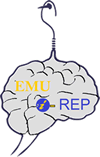JavaScript is disabled for your browser. Some features of this site may not work without it.
| dc.contributor.advisor | İnce, Erhan (Supervisor) | |
| dc.contributor.author | Bashi, Wasem Qassab | |
| dc.date.accessioned | 2025-06-10T12:06:16Z | |
| dc.date.available | 2025-06-10T12:06:16Z | |
| dc.date.issued | 2023-07 | |
| dc.date.submitted | 2023-07 | |
| dc.identifier.citation | Bashi, Wasem Qassab. (2023). Classification of Parasitized Cells for Malaria Detection with Help of Deep Learning. Thesis (M.S.), Eastern Mediterranean University, Institute of Graduate Studies and Research, Dept. of Electrical and Electronic Engineering, Famagusta: North Cyprus. | en_US |
| dc.identifier.uri | http://hdl.handle.net/11129/6366 | |
| dc.description | Master of Science in Electrical and Electronic Engineering. Institute of Graduate Studies and Research. Thesis (M.S.) - Eastern Mediterranean University, Faculty of Engineering, Dept. of Electrical and Electronic Engineering, 2023. Supervisor: Prof. Dr. Erhan İnce. | en_US |
| dc.description.abstract | Millions of people worldwide suffer from malaria, a potentially fatal disease. Early and precise diagnosis is essential for the medical condition to be successfully treated and managed. This thesis employs three computer-aided methods to determine percentages of red blood cells that are either parasitic or uninfected given test set(s) obtained from the National Institutes of Health (NIH) dataset. The three methods employed are traditional image processing, Support Vector Machine (SVM), and Convolutional Neural Networks based Deep Learning (CNN-DL). The simulations are performed using a dataset that has 27,558 images of red blood cells. The traditional image processing method achieves an accuracy of 91.97%. SVM classifier using Histogram of Oriented Gradients (HOG) features has an accuracy of 88.6% and with features extracted using Local Binary Patterns (LBP) accuracy has improved to 92.5% using a smaller subset of 6,040 images. The two previous methods proved to be inferior when compared with the CNN- DL classification which gave an accuracy of 95.7% using AlexNet, and 96.32% using GoogLeNet. The accuracy of each of the three computer-aided methods was based on performance metrics calculated using confusion matrices and the Receiver Operating Characteristic (ROC) curves. | en_US |
| dc.description.abstract | ÖZ: Dünya çapında milyonlarca insan, potansiyel olarak ölümcül bir hastalık olan sıtmadan muzdariptir. Tıbbi durumun başarılı bir şekilde tedavi edilmesi ve yönetilmesi için erken ve kesin teşhis şarttır. Bu tezde, Ulusal Sağlık Enstitüleri (USE) veri setinden rastgele seçilerek oluşturulmuş deneme kümeleri içindeki kırmızı kan hücrelerinin parazitik olma veya enfekte olmama yüzdelerini belirlemek adına üç bilgisayar destekli yöntem kıyaslanmaktadır. Kullanılan yöntemler sırası ile geleneksel görüntü işleme yöntemleri, destek vektör makinesi (DVM) ve evrişimsel sinir ağları tabanlı derin öğrenme (ESA-DÖ) olmuştur. Benzetimler için 27,558 kırmızı kan hücresi içeren bir veri seti kullanılmıştır. Geleneksel görüntü işleme yöntemi %91,97'lik bir doğruluk ile temiz ve parazitli hücreleri ayırabilmiştir. Yönlendirilmiş Gradyanlar Histogramı (YGH) özniteliklerini kullanan DVM sınıflandırıcının doğruluğu %88.6 iken yerel ikili Örüntü (YİÖ) kullanılarak çıkarılan özniteliklerle sınıflandırma sonrası doğruluk %92,5'e yükselmiştir. AlexNet ve GoogleNet derin öğrenme modelleri kullanıldığında elde edilen sınıflandırma sonuçları ilk iki bilgisayar tabanlı yöneme göre daha iyi çıkmıştır. Bütün veri tabanı kullanıldığında sınıflandırma başarısı AlexNet için %95.7 iken GoogLeNet %96.32 ile biraz daha iyi sonuç vermiştir. Başarı değerleri her üç yöntem için elde edilen karışıklık matris değerleri kullanılarak ve Alıcı Çalışma Karakteristik eğrilerinden faydalanılarak değerlendirilmiştir. | en_US |
| dc.language.iso | eng | en_US |
| dc.publisher | Eastern Mediterranean University (EMU) - Doğu Akdeniz Üniversitesi (DAÜ) | en_US |
| dc.rights | info:eu-repo/semantics/openAccess | en_US |
| dc.subject | Electrical and Electronic Engineering Department | en_US |
| dc.subject | Artificial intelligence--Medical applications | en_US |
| dc.subject | Medical informatics | en_US |
| dc.subject | Biomedical engineering | en_US |
| dc.subject | Artificial Intelligence--Medical Applications | en_US |
| dc.subject | Medicine--Decision making--Data processing | en_US |
| dc.subject | Health Informatics | en_US |
| dc.subject | Artificial Intelligence--Computational intelligence | en_US |
| dc.subject | Support Vector Machine; Local Binary Patterns; Histogram of Oriented Gradients; Convolutional Neural Networks Based Deep Learning | en_US |
| dc.title | Classification of Parasitized Cells for Malaria Detection with Help of Deep Learning | en_US |
| dc.type | masterThesis | en_US |
| dc.contributor.department | Eastern Mediterranean University, Faculty of Engineering, Dept. of Electrical and Electronic Engineering | en_US |









